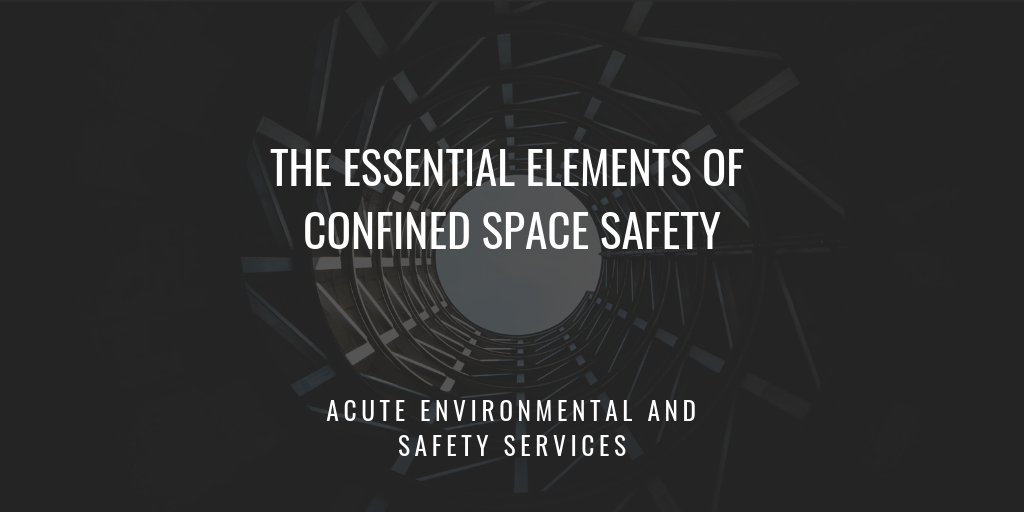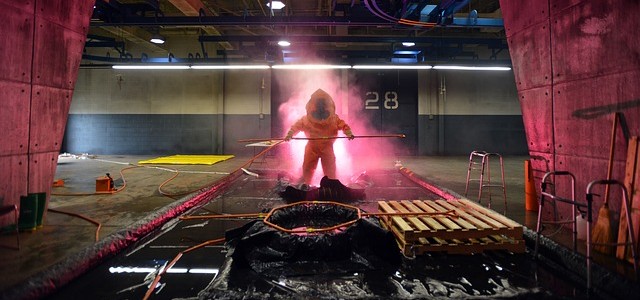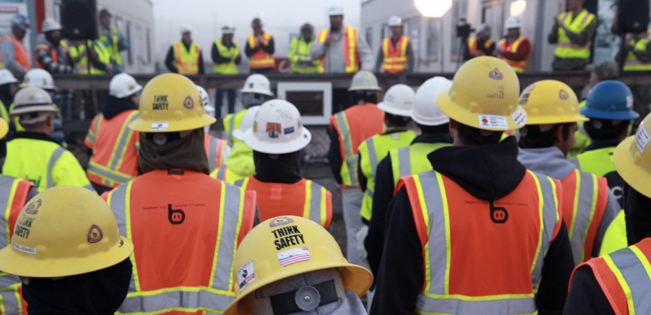
A large number of workplaces in many different fields contain areas that are considered “confined spaces.” These areas have limited entry and exit points and were not specifically designed for human occupation, are just large enough for workers to access, and necessitate confined space safety training. Confined spaces can be extremely dangerous, as excessive heat, toxic gasses, and even explosive atmospheres can quickly become health hazards for those entering them. Confined space safety is therefore of the utmost importance; read on to discover the elements essential to keeping you safe and prepared. The best way to stay safe in confined spaces is to complete hands-on, practical confined space training. Contact the experienced experts at ACUTE today to learn more about your training options!
The Essential Elements of Confined Space Safety
Defining Confined Spaces
Before we begin looking at confined space safety, it’s important to define exactly what we’re talking about when we refer to confined spaces. According to the Ontario Ministry of Labour, Immigration, Training and Skills Development, confined spaces are fully or partially enclosed spaces that are not designed and constructed for continuous human occupancy and in which atmospheric hazards may occur because of their construction, location, contents, or because of the work that is done in them.
The United States Department of Labor puts it this way: “Many workplaces contain areas that are considered ‘confined spaces’ because while they are not necessarily designed for people, they are large enough for workers to enter and perform certain jobs. A confined space also has limited or restricted means for entry or exit and is not designed for continuous occupancy.”
Confined spaces therefore include, but are not limited to, tanks, vessels, silos, storage bins, hoppers, vaults, pits, manholes, tunnels, equipment housings, ductwork, and pipelines.

Confined space safety begins with recognizing the danger.
How To Determine if Confined Spaces Exist in Your Workplace
To determine whether a “space” meets the definition of a confined space, consider these three questions:
- Is the space fully or partially enclosed?
- Is the space not both designed and constructed for continuous human occupancy?
- Might an atmospheric hazard occur?
This table demonstrates the requirements needed in order to label a space as confined.
| Is it designed and constructed for continuous human occupancy? | Might an atmospheric hazard occur? | Is it a confined space? |
|---|---|---|
| Yes | Yes | No |
| Yes | No | No |
| No | Yes | Yes |
| No | No | No |
The only way to determine if a “space” meets the definition for a “confined space” is to evaluate it, and how that evaluation is done is up to the employer. Once that determination has been made, then it’s time to put some confined space safety measures in place.

Confined spaces aren’t built for human occupancy and can contain atmospheric hazards.
Assessing Human Occupancy
Since one of the main factors in ensuring confined space safety is determining whether the area is designed for human occupancy, it’s important to know exactly what that means.
“To determine if a space is designed and constructed for human occupancy, one must look at the intent and construction of the space,” according to the Ontario Ministry of Labour, Immigration, Training and Skills Development. You must then ask what was the space intended for, and to what standards has it been designed and constructed to allow people to occupy it?
Areas such as offices, service rooms (such as mechanical rooms, elevator rooms), arenas, shops, walk-in freezers and refrigerators, laboratories, flammable liquid storage and dispensing rooms, and rooms equipped with approved fire suppression systems are considered to be designed for human occupancy, and even though hazardous hazards may occur, they don’t fall under the banner of a confined space safety concern. Examples of spaces that would not be considered as “both designed and constructed for continuous human occupancy” are:
- storage tanks, tank cars, process vessels, boilers, pressure vessels, vats, bins, silos, bag-houses and other tank-like compartments usually having only a manhole for entry
- open topped spaces such as pump wells, augured caissons, pits, or degreasers
- pipes, sewers, ducts, and similar structures
- cargo tanks, cellular double bottom tanks, duct keels, ballast and oil tanks, and void spaces
- chutes, mill holes, ore bins, inside of a skip hanging in a shaft, crusher jaws
- flues, chimneys, ovens, or furnaces.
The size and nature of the space isn’t the only element, though; the possibility of atmospheric hazards must also be present.

Ask what was the space intended for, and to what standards has it been designed and constructed to allow people to occupy it.
Recognizing Atmospheric Hazards
When we talk about atmospheric hazards, we mean:
- the accumulation of flammable, combustible, or explosive agents,
- an oxygen content in the atmosphere that is less than 19.5 percent or more than 23 percent by volume, or
- the accumulation of atmospheric contaminants, including gases, vapours, fumes, dusts, or mists that could result in acute health effects that pose an immediate threat to life, or interfere with a person’s ability to escape unaided from a confined space.
These atmospheric hazards can emanate from a number of sources, such as previous contents of the space, chemical reactions of materials present in the space, activities performed in or about the space, or from adjacent processes or locations.
For more on this, be sure to read The Science Behind The Hazards Of Confined Spaces.

Recognizing and protecting yourself from atmospheric hazards is a key component of confined space safety.
How to Get the Proper Confined Space Safety Training
To ensure the highest possible levels of confined space safety, every worker who works in confined spaces must receive adequate training in the recognition of hazards associated with confined spaces, as well as training to be able to safely perform the assigned duties. Training is also required for persons contributing to the work activity (i.e., performs related work), even those not entering the confined space, such as attendants and rescue workers. For example, ACUTE offers a Confined Space Entry Awareness course as well as Confined Space Rescue.
Note: Simply giving instructions to a confined space worker does not ensure that the worker is competent to safely perform work. Hands-on training should be an essential part of the confined space training.
In cases where a worker is new to the job and does not have sufficient experience, it’s good practice to make sure they’re teamed up with more experienced workers on top of receiving the necessary training.
Confined space safety training includes, but is not limited to, the following:
- Recognition and identification of potential hazards associated with the confined spaces that will be entered.
- Evaluation and control procedures for the identified or potential hazards.
- Familiarity with all equipment such as ventilation equipment (blowers), harnesses, and air quality monitors (e.g., Oxygen/combustible meters) that will be used while in the confined space.
- Familiarity with all personal protective equipment (e.g., respirators) that the worker will be using while in the confined space.
- Procedures for entering the confined space.
- Procedures to follow in the event of a situation developing that could present additional risk to the worker or an emergency.
- The specific work to be done while in the confined space.
The confined spaces training generally lasts eight hours and takes place in a single day.

Confined space safety training is essential.
Trust ACUTE For Confined Space Safety Training!
Hands-on, practical confined space training is the best way to keep employers and workers safe in the workplace! ACUTE is dedicated to confined space safety and understands the importance of course and training provider approval. ACUTE offers many training courses to help workers, employers, and everyone else involved stay safe on the job.
You can trust ACUTE to help your business understand your training challenges while also taking care of the most crucial aspect of a safety program: providing unparalleled tailoring and customer service.
“The best place to get trained, period. The lessons include plenty of hands on components which definitely help retain the knowledge taught within the classrooms. Above all, the instructors know their stuff, they are all extremely knowledgeable and draw upon their own experiences to help engage the class. If I could give them higher than 5 stars, I would, and I would most definitely do my training refresher courses here again.” – Ali. A
Read more customer reviews here.
ACUTE is located in Waterloo, Ontario, and services customers from cities such as Toronto, Mississauga, Brampton, Hamilton, Milton, Kitchener, London, Guelph, and others across Ontario.


